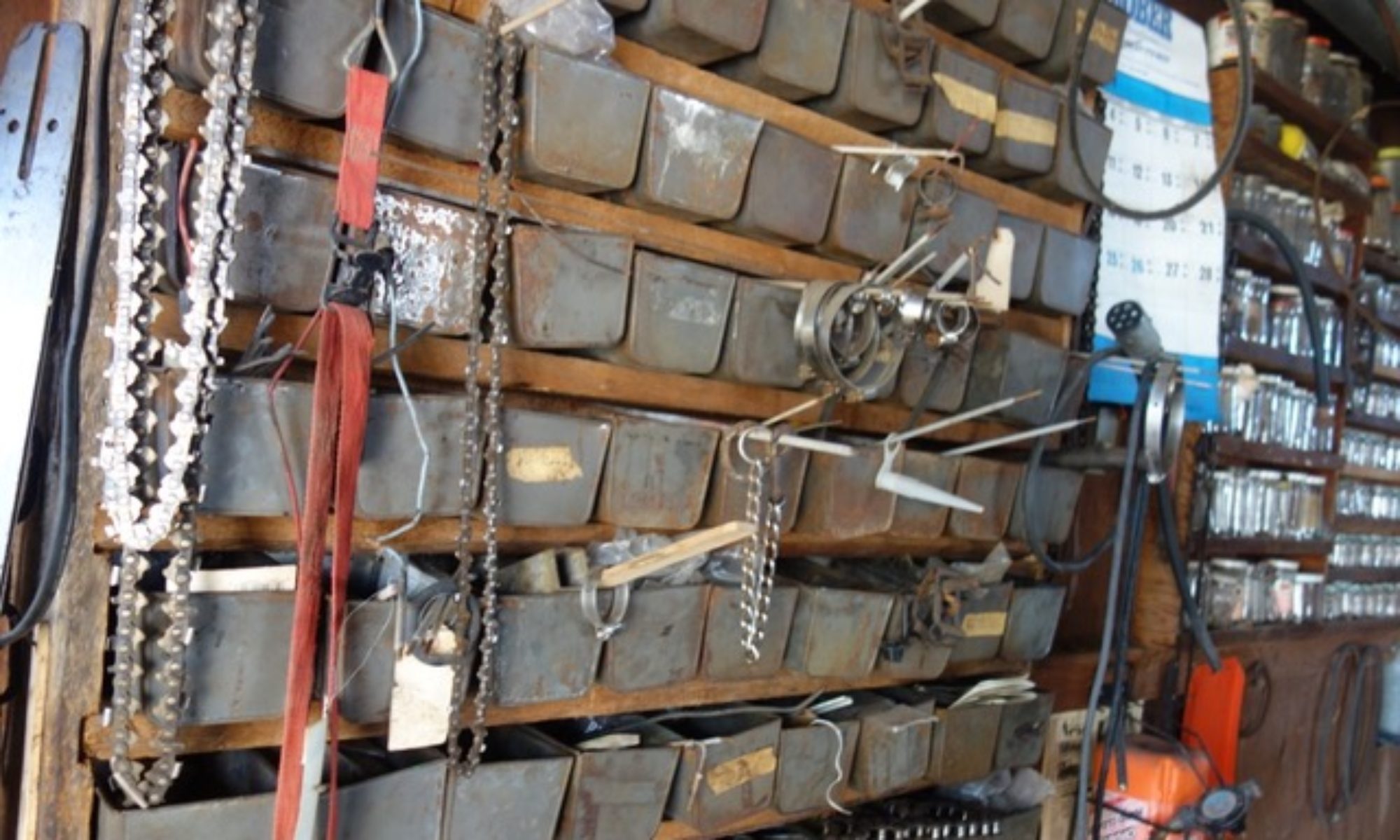EPISODE 819 THE DRAGOON HELMET
alan skeoch
May13, 2023
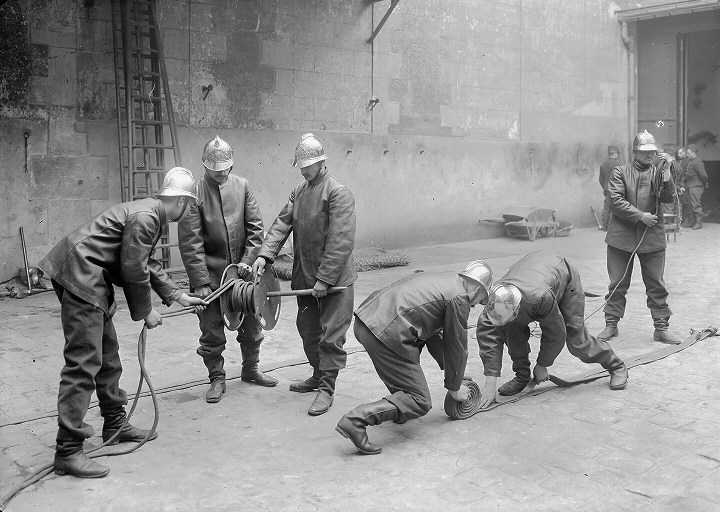
Marjorie and I noticed the Royal Dragoon Guards with special interest during the coronation
of Charles III.
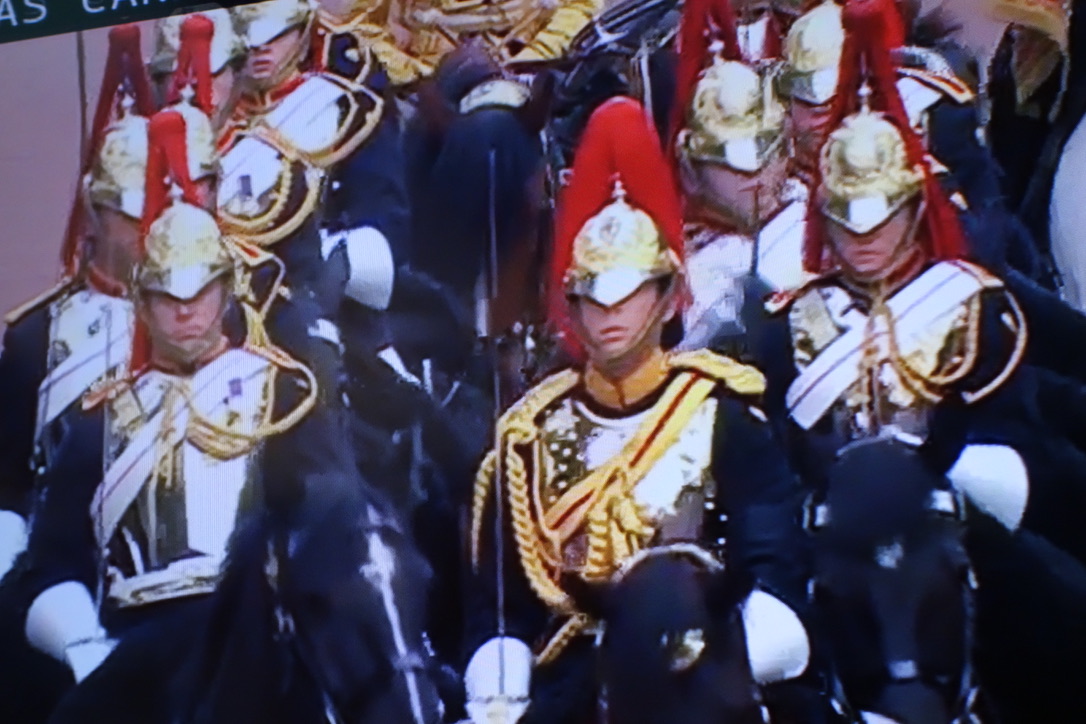
“Alan, those cavalry soldiers are wearing our helmet.”
“Our helmet?”
“yes, the tinware helmet your mom was given as family heirloom”
“There it is sitting up near the beam in the fireplace room.”
“Ignored.”’
“Not ignored but certainly Taken for Granted.”
“who wore it?”
“Una Dunne’s father was a fireman in a place called Deal I believe
“In Dorset.”
“That’s where your great grandfather lived until he died.”
“Remember when we visited Una?”
“She was a poet….gave us little volumes of her poetry.””
“She also gave mom the dragoon helmet that British firemen wore in the 19th century.”
“Did the hemet have any practical use?”
“I suppose it did…stopped falling bricks or flaming timbers from crushing skulls.”
“WOULD A DRAGON HELMET STOP A BULLET?”
“Dragoon helmets are only used for fancy occasion.”
“Like a coronation.”
“Let’s wear it now as we watch the coronation of Charles III.”
Do you want to know more? Scroll down.
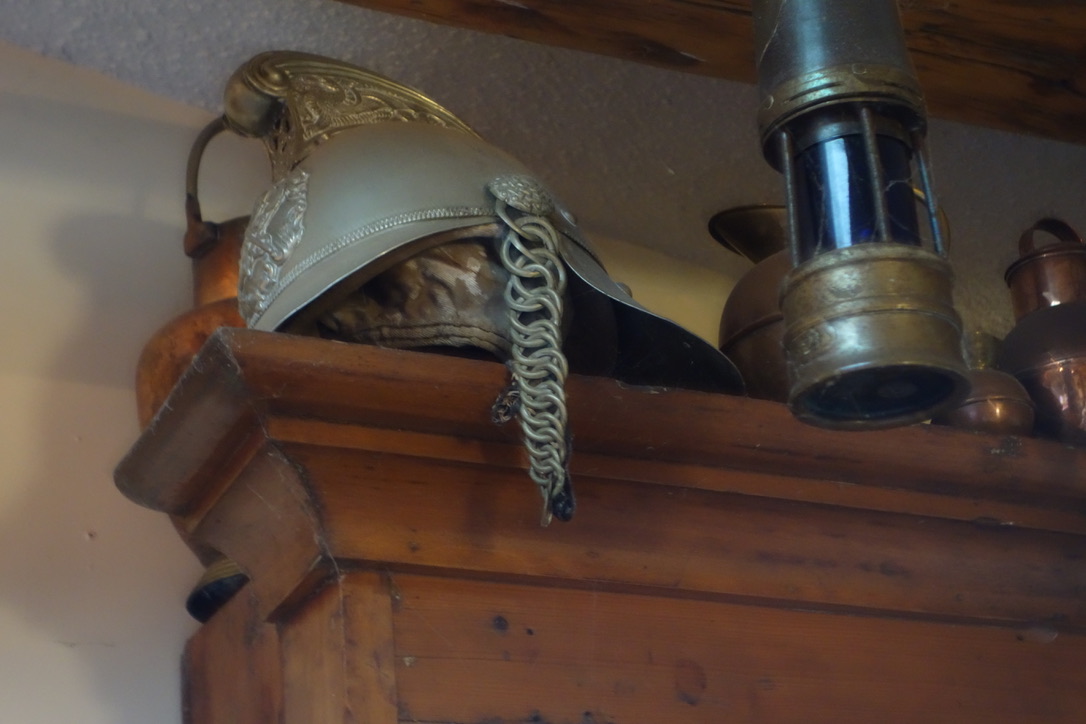

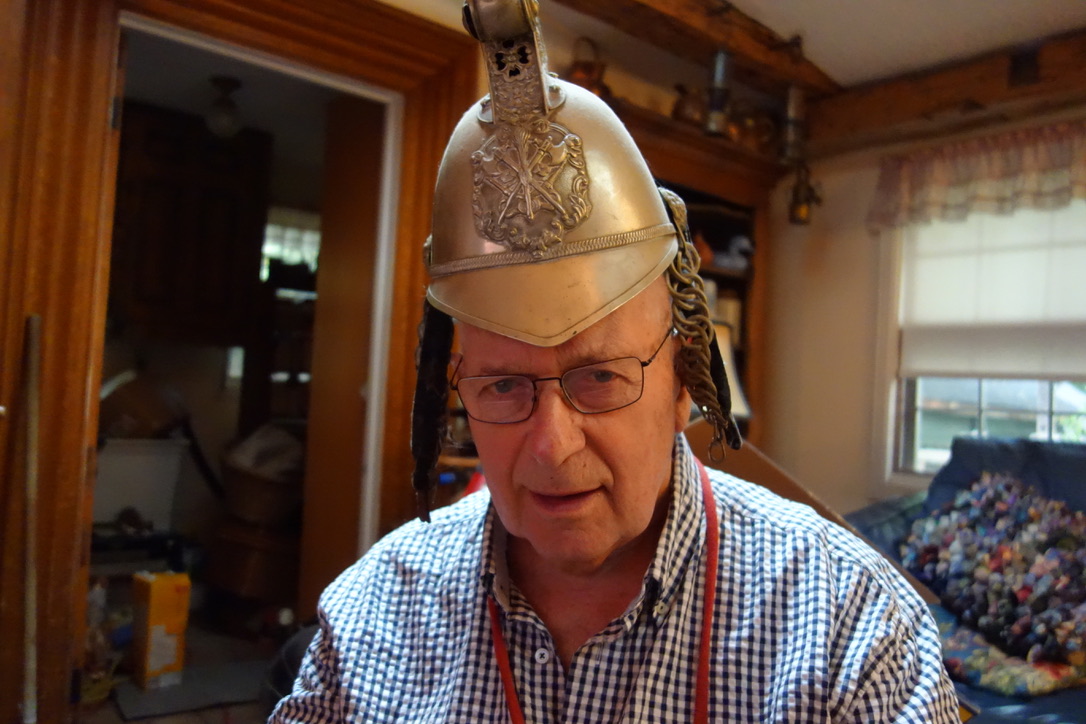
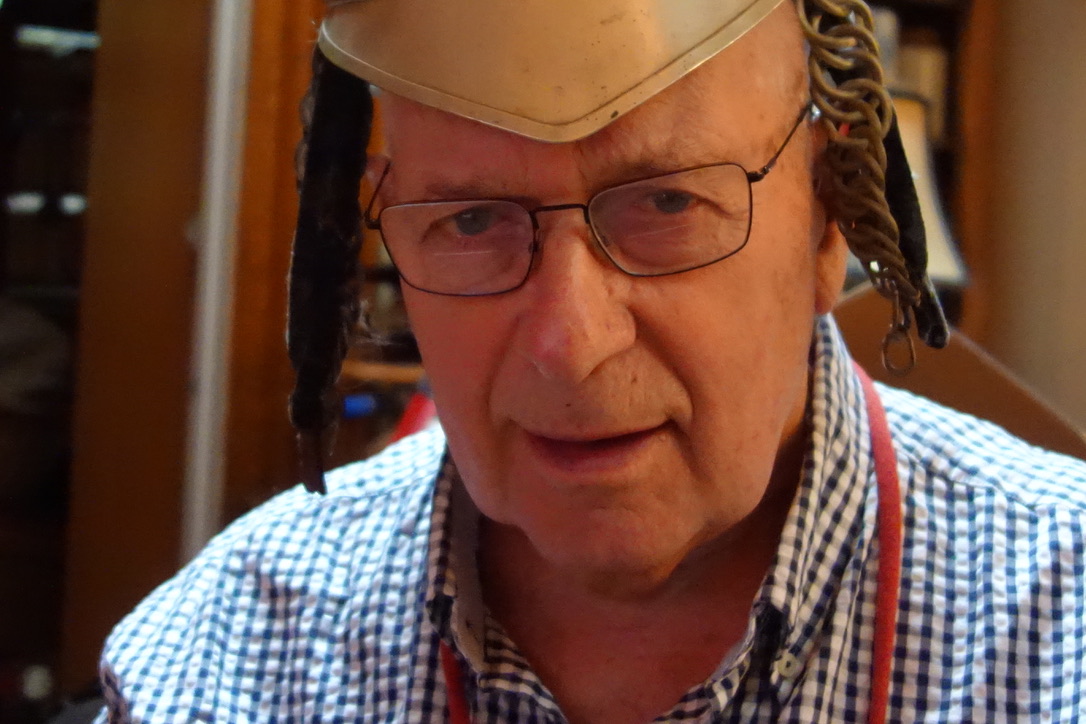

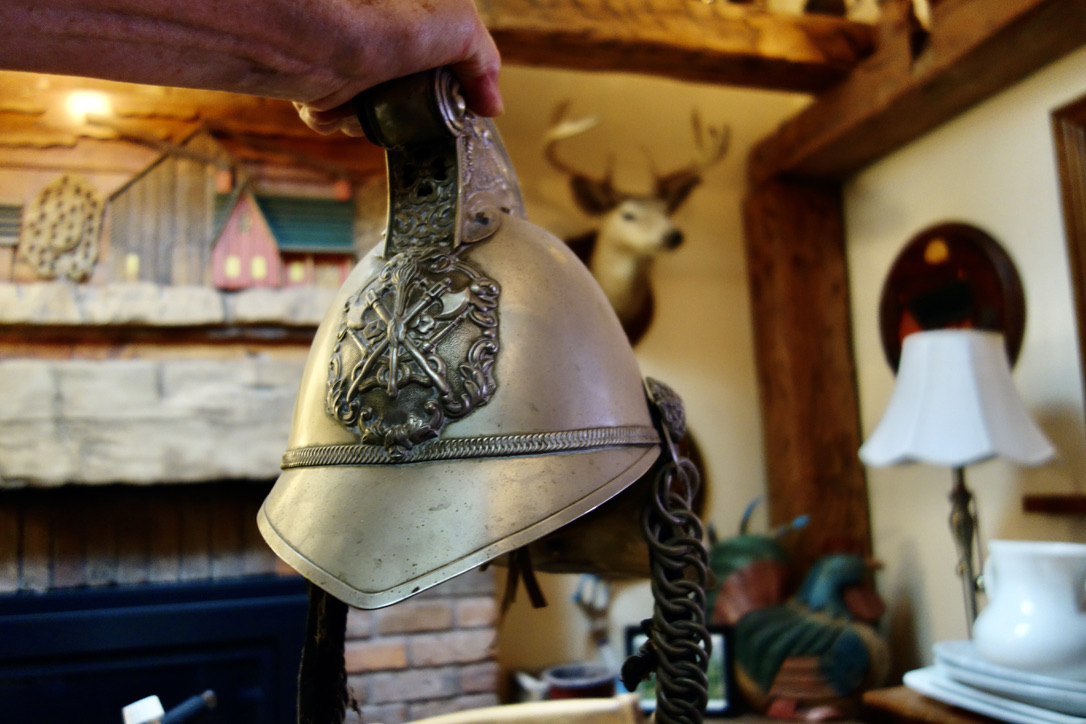




Dragoon helmet
A dragoon helmet was an ornate style of metal combat helmet featuring a tall crest; they were initially used by dragoons, but later by other types of heavy cavalry and some other military units. Originating in France in the second half of the 18th century, it was widely imitated by other European armies and was last used in combat in 1914. Some military units continue to wear this style of helmet for parades and other ceremonial duties.
History
18th century European dragoon cavalry generally wore tricorn hats, but in 1762, the French Army introduced a new uniform for their dragoon regiments, featuring a crested helmet, loosely based on classical Ancient Greek and Roman styles.[1] It was made of steel with a brass crest and featured an imitation panther fur “turban” and a long black horsehair mane or plume.[2] One distinctive example of this kind of headgear used to be the Tarleton helmet. By the end of the century, it had developed a taller, more elegant shape and a removable feather plume at the side, which was only worn on parade.[3] The dragoon helmet was also adopted by the French cuirassier regiments which were first formed in 1803,[4] and by French engineers. In 1812, the French engineer corps became responsible for the Paris fire brigade, the Sapeurs-pompiers, who also adopted the dragoon helmet;[5] this was later copied and adapted by other European fire services, including the London Fire Brigade who introduced the crested Merryweather helmet in 1868 following a visit to Paris by Captain Sir Eyre Massey Shaw.[6]
In 1798, the Imperial and Royal Austrian Army introduced a crested helmet for nearly all their troops;[7] it was made of leather with metal fittings and had a woollen “comb” instead of the French mane. A taller version of this helmet was adopted by the dragoon regiments of the Imperial Russian Army in 1803, replacing a bicorn hat.[8]British dragoons and dragoon guards adopted a helmet of the Austrian style in 1812, but quickly replaced the woollen comb (known as a “roach” in British service) with a horsehair mane;[9] the Household Cavalry however, followed the opposite path, first adopting horsehair but rapidly replacing it with a woollen comb.[10]
In the century that followed, the dragoon helmet continued to be worn both on parade and in battle. In 1842, the Prussian Army replaced their crested helmets with one surmounted by a spike, the Pickelhaube.[11] The British heavy cavalry, who in 1817 had adopted the “Roman Pattern” helmet with a huge bearskin crest,[12] replaced it in 1847 with the “Albert Pattern“, a spiked helmet with a falling horsehair plume, which could be removed when on campaign.[13] The Albert Pattern helmet was also used by cavalry raised in various parts of the British Empire, for example, The Governor General’s Horse Guards, formed in Canada in 1855.[14]
As the power and accuracy of weapons increased, so conspicuous headgear like the cavalry helmet began to be discarded in favour of more practical designs. Bavaria, however, would stick to the Raupenhelm (caterpillar helmet), this unmistakable feature of many of its army’s uniforms, until the adoption of prussian models only after King Ludwig’s death in 1886. In France, the traditional uniform was considered to increase the esprit de corps of the heavy cavalry in their role as shock troops and the French dragoons and cuirassiers rode to war in them in 1914, the only concession to modern warfare being drab-coloured helmet covers which were first issued in 1902.[15]
